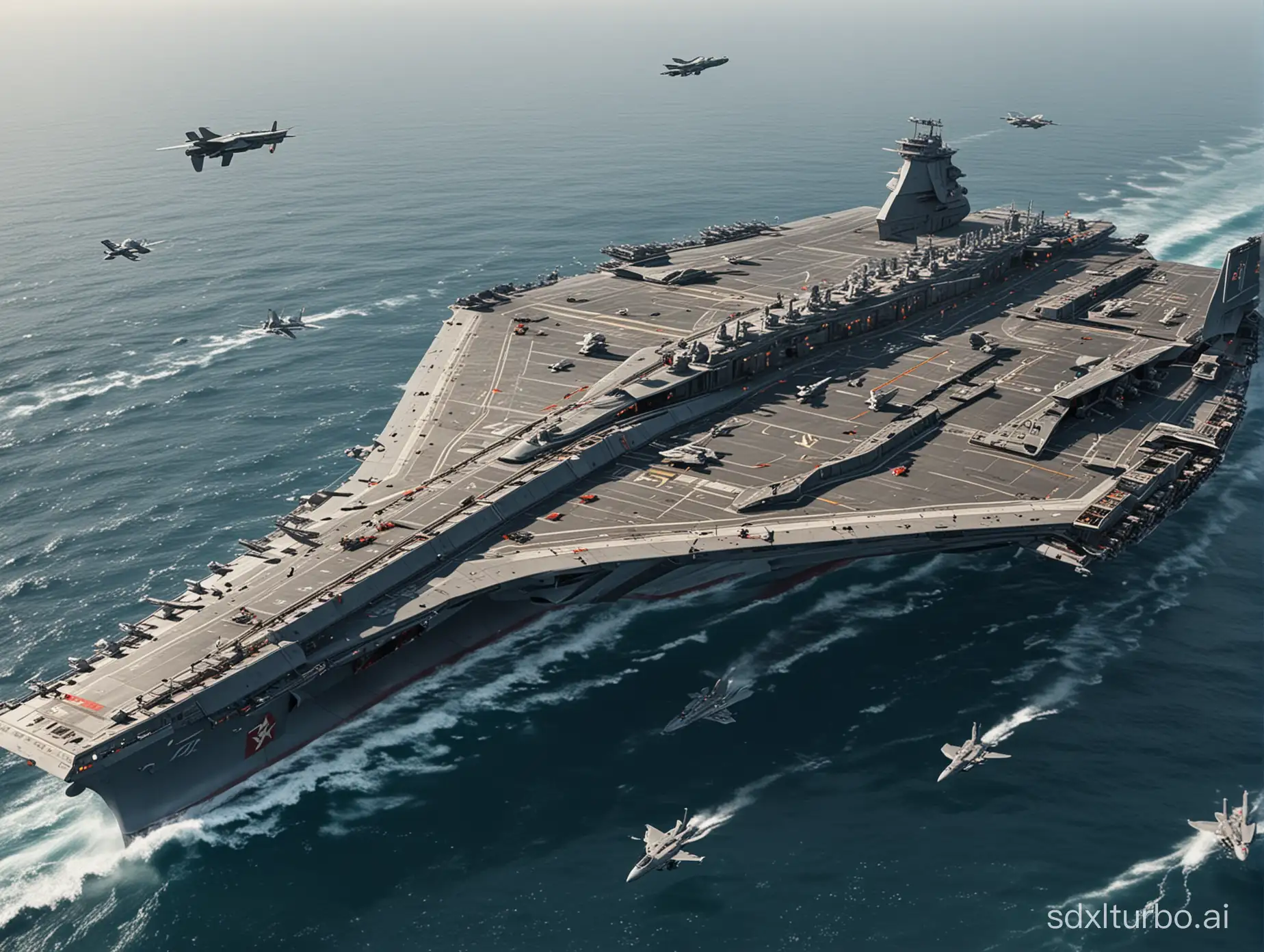Futuristic Flying Aircraft Carrier with Chinese Architectural Influence and Attack Drones

Image Prompt
Prompt
Design an aircraft carrier that can fly in the air, equipped with futuristic attack drones, combining elements of ancient Chinese architecture and modern science fiction.
Choose Model: realistic
Aspect Ratio: 4:3
Generated by Stable Diffusion SDXL
Related AI Images




R


R


R
Related Tags
Prompt Analyze
- Subject: The aircraft carrier is depicted as a futuristic marvel, capable of flight, blending elements of advanced technology with ancient Chinese architectural aesthetics. The carrier's design may feature sleek lines, aerodynamic structures, and innovative propulsion systems, evoking a sense of cutting-edge engineering. It embodies the fusion of traditional Chinese architectural motifs such as pagoda-style towers, curved roofs, and intricate lattice work, with modern materials and design principles. Setting: The setting could be a dynamic futuristic cityscape or a vast expanse of sky, highlighting the carrier's airborne capabilities. Buildings reminiscent of traditional Chinese architecture might dot the landscape, providing contrast and context to the carrier's design. Background: The background could showcase a bustling scene of technological advancement, with other futuristic aircraft, drones, and structures complementing the carrier. A sky filled with clouds or a backdrop of stars enhances the sense of grandeur and epic scale. Style/Coloring: The image could employ a blend of vibrant colors and metallic finishes, symbolizing both the rich history of Chinese culture and the sleekness of modern technology. Neon accents or glowing elements may add a futuristic flair, while subtle nods to traditional Chinese color palettes add depth and cultural resonance. Action: Attack drones could be depicted launching from the carrier's deck, showcasing its offensive capabilities and the seamless integration of technology. Dynamic angles and motion blur convey a sense of speed and agility, enhancing the drama of the scene. Items: The carrier's deck could be adorned with futuristic aircraft handling equipment, control towers, and defensive weaponry, emphasizing its functionality as a mobile command center and strategic asset. Costume/Appearance: Crew members or pilots could be depicted wearing sleek, futuristic uniforms with subtle nods to traditional Chinese attire, reflecting the fusion of past and future. Accessories: The carrier might be embellished with ornate detailing inspired by Chinese mythology or symbols of power and fortune, adding visual interest and cultural depth to the image.